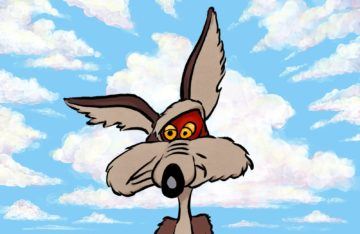Editor’s Note: This is six years old but still very much worth reading.
Albert Burneko in Deadspin:
 A joke has structure. It has a central rule. Setup, punchline. The setup produces a tensed, expectant state; the punchline resolves the tension with a surprise. If the elements of the joke are not arranged into a setup and a punchline, it is not a joke. It is just a statement.
A joke has structure. It has a central rule. Setup, punchline. The setup produces a tensed, expectant state; the punchline resolves the tension with a surprise. If the elements of the joke are not arranged into a setup and a punchline, it is not a joke. It is just a statement.
This is a matter of mechanical necessity; it’s true of every kind of joke, from long story jokes to one-liners. Consider this short, immaculate, spectacularly stupid joke by the immortal Jack Handey, which has never failed to make me giggle uncontrollably, and which I now will ruin with explanation:
The crows seemed to be calling his name, thought Caw.
Structure makes this a funny joke. The first clause—“The crows seemed to be calling his name”—paints a deliberately writerly picture in which the word “seemed” is the key. You’ve got crows calling, and you’ve got a name somebody—probably a dipshit—is hearing in their calls. “Seemed” is what suggests that the relationship between the calls and the name is interpretive, possibly even imaginary. That’s the setup: Between the autumnal image of crows and the way the word “seemed” puts you in mind of the sort of person who’d search for acknowledgment in animal sounds, this seems to be a lonely sort of image, of the sort you’d find in a crappy novel about a lonely, imaginative naïf with an artist’s soul or some shit. And then you get the punchline, that glorious punchline, not diluted over a whole sentence but breaking out sharply like a sudden fart for maximum impact on that ridiculous last word, and it changes your perception of what came before it. The crows aren’t calling his name. The crows are yelling caw. Caw is what crows yell—it’s called cawing, for Chrissakes—and Caw is a doofus.
More here.
